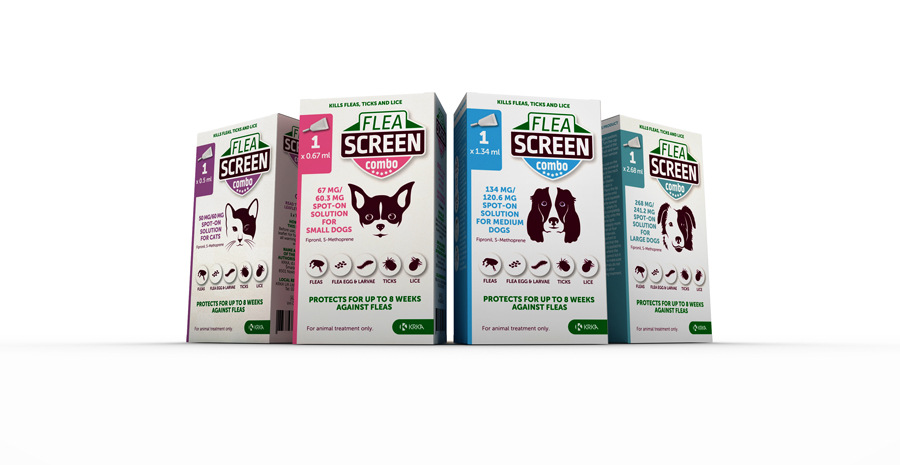Fleas.
Treatment and prevention of fleas in dogs and cats.
Why are fleas so common?
Researchers at Bristol University found that as many as 1 in 4 cats, and 1 in 7 dogs are carrying fleas – that’s over 1.2 million dogs and 1.8 million cats in the UK!
Fleas are certainly prolific breeders, a female flea can produce up to 50 eggs per day which are laid in the coat of your pet and fall off into the environment. This is how infestations get established in the home, your dog or cat has in effect become a living, breathing ‘salt shaker’ scattering flea eggs wherever they go!
Flea infestations can persist and prevention is much easier than a cure!
Flea eggs will hatch in a few days to release larvae which migrate away from light to deep within carpets, bedding and under furniture where they feed on dander and flea faeces that have shed off your pet. Once mature, the larva spins a protective cocoon around itself to form a pupa where inside it develops into the insect that will eventually emerge and jump onto your pet when conditions are favourable.
Depending upon temperature, humidity and the availability of a suitable host, the cycle can take 2 – 3 weeks or several months to complete. Pupae are very resistant to adverse environmental changes, including household flea treatments which is why flea infestations can persist. Prevention is much easier than a cure!
How to get rid of fleas!
The strategy is simple – we need to break the flea life cycle by killing the fleas on your pet and waiting for the environmental life stages to die out. It is important to use a licensed veterinary product according to the manufacturer’s instructions because poor owner compliance is the main reason for breakdowns in flea control. As flea infestations can take weeks or at worst months to resolve, it is important to use a product that has a sustainable effect.
95% of a flea problem exists as the immature life stages in the home environment!
Since 95% of a flea problem exists as eggs, larvae and pupae in the environment, we can speed up eradication by physically removing these immature stages once the life cycle has been broken by treating the pet. You could fumigate the house but thorough cleaning of carpets, furnishings and bedding may suffice. Household flea sprays containing methoprene or pyriproxyfen can be useful but however diligently applied, you will not kill all the eggs and larvae in the home and you won’t kill any of the pupae because they are resistant to chemicals.

Some spot-on flea treatments such as FLEA SCREEN combo contain active ingredients that kill fleas on the pet and if the flea lives long enough to lay its eggs, will also sterilise the eggs so that they do not hatch and re-seed the environment. Unfortunately, the most effective method for dealing with pupae is to physically remove them by thorough cleaning and vacuuming the house or waiting for the fleas to emerge (pupation) and jump on your pet. This is why it is important that all pets in the house are treated with a suitable product and they are given full access to where they always go. We can stimulate pupation by increasing room temperature and placing damp towels on the radiators to increase humidity, which explains why we always see a flush of flea activity in late autumn as the nights get colder and people start to turn on their central heating.
Having looked at the flea life cycle a key question is: are flea repellants useful? If you have a flea infestation, definitely not! We need to be using a product that kills fleas on the pet to ensure that the flea life cycle is broken. The flea needs a blood meal every day to survive and if a repellant is preventing it from jumping on your pet, it is most likely to jump on you!
Are fleas a problem?
They can be! Fleas are itchy and unpleasant causing your pet to scratch and sometimes the skin can become sore and infected which may require treatment with antibiotics. However, some pets can develop an allergy to flea saliva known as Flea Allergy Dermatitis (FAD) which can be distressing for both the pet and the owner and will certainly require a visit to the vet. Fleas can also transmit other pathogens whilst feeding, tapeworm being the most common which is why it’s recommended to ensure that your pet is wormed if you have a flea problem.
PROTECT my pet



